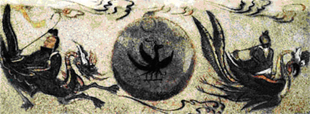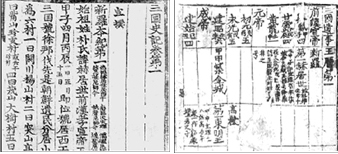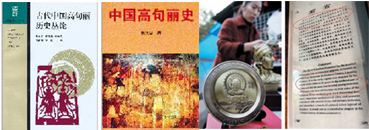 Koguryo (Goguryeo) was a kingdom in northern Korea and Manchuria from 37 BC to 668 AD. It was founded by Ju-mong (posthumously called King Dongmyeongseong) and ruled by 26 kings. Koreans have accepted Koguryo people as their ancestors without any doubt, having the tacit agreement of neighborhood countries including China.
Koguryo (Goguryeo) was a kingdom in northern Korea and Manchuria from 37 BC to 668 AD. It was founded by Ju-mong (posthumously called King Dongmyeongseong) and ruled by 26 kings. Koreans have accepted Koguryo people as their ancestors without any doubt, having the tacit agreement of neighborhood countries including China.However, China launched the Northeast Asian Project in 2002 and has been claiming since then that Koguryo was one of the regional kingdoms that belonged to China. Koguryo is becoming a hot issue between Korea and China. The Chinese government said that they would have supported organizations to evaluate and extend the academic and scientific validity of their claims about Koguryo with two and half million dollarsby 2006. As China is historically the biggest and strongest country in East Asia, their assertions that Koguryo belonged to the ancient Chinese kingdom are not very difficult to accept for those indifferent to the history of the East 1500 years ago.
The textbooks used in China's schools until the Northeast Project began considered the history of Koguryo as a part of the Three Kingdom Period along with Shilla and Baekje on the Korean peninsula (Yoon 107). According to ancient history books preserved in China and Korea such as

Besides
Chinese researchers are claiming that tributes and enthronement provide a basis for Koguryo's being a local government of the ancient Chinese. At that time, tributes and enthronements were a common diplomatic strategy performed according to the balance of power of countries. Numerous ancient dynasties such as Shilla, Baekje, Koryo, Chosun, Japan, Vietnam, and Turkey also rendered tributes to stronger countries.
An ancient history book,

Why are the Chinese claiming that the history of Koguryo belongs to China? First, they need valid grounds to hold the Joseon tribe of 2 million who speak Korean and live in Manchuria, which is currently Chinese territory. As the cultural exchange between Korea and China and the Korean Wave over East Asia expand, Korean style becomes popular with the Joseon tribe, and their illegal entrance into Korea is a social problem now. Since Communism began to accept some part of the Capitalist system, China, a multi-ethnic country, has had arguments about historical views not only with Korea but also with other countries: Mongolia, Vietnam, and India. China needs a historical basis to unite their minority races more strongly.
Second, China wants to block a possible future territorial dispute over "Gando,"which Japan gave to China in the epoch of Japanese imperialism during World War II in return for the possession of the railroad industry and the mining industry in China. Korea couldn't recover the region after the end of World War II, and some Koreans lay claim to that land.
Third, in the case of the downfall of North Korea, China can have historical grounds for political intervention in North Korea no less than Korea and the United States of America.
Now, Koreans are trying not to lose a part of their origins, starting "Koguryo Project" in collaboration with the Society for the Study of Koguryo (KTF) and the National Council of Youth Organizations. A TV program,

Yoon Hwy-tak (2004). "China's Northeast Project: Defensive or Offensive Strategy?" East Asian Review 16 (4): 99-121.








